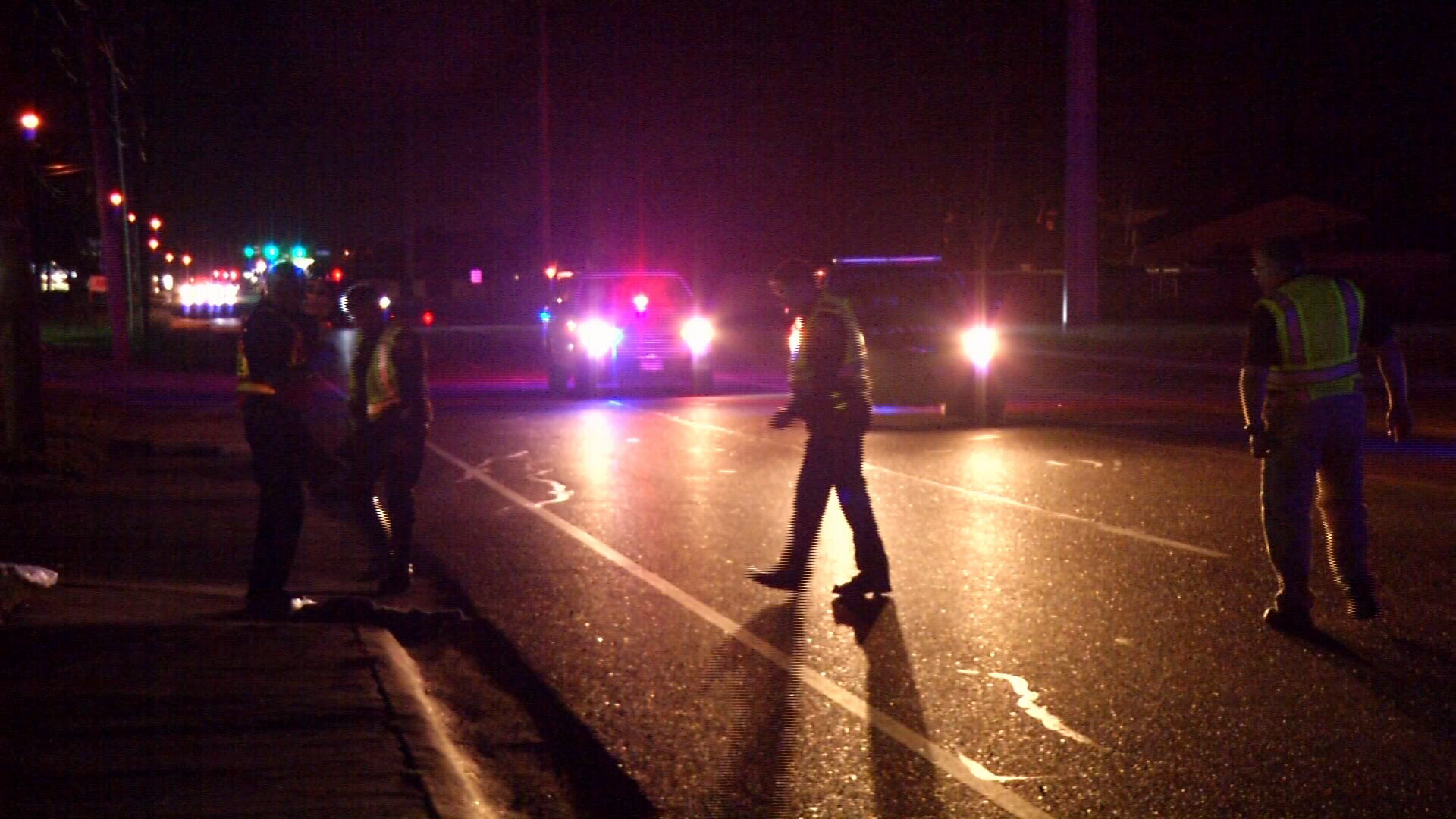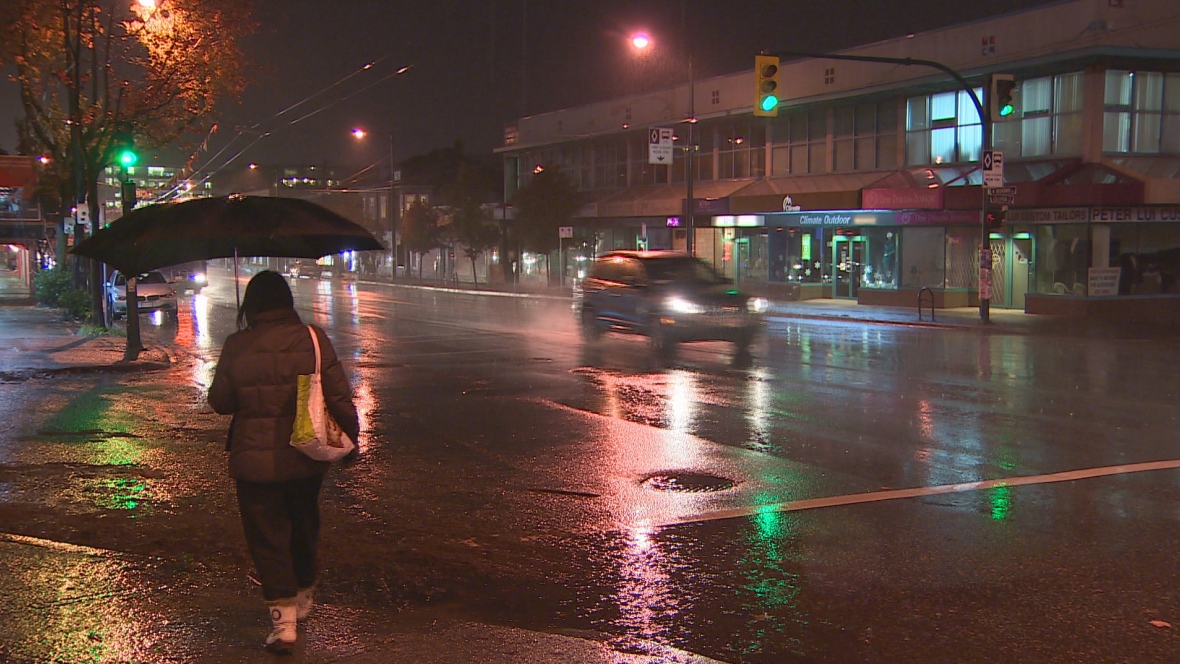
We have just entered the dark cold rainy months of winter, and Vancouver is in an unusual situation. Unlike most large Canadian cities we do not normally get snow and live in a habitat with lots of tall trees and a lot of rain. These factors make walking in Vancouver’s low light winters a challenge. Snow does provide some light bounce, and does make cars go slower. In 2016 nearly one pedestrian a month was killed on the City of Vancouver streets. Most were over 50, and most were men. The majority of pedestrian deaths in the Province died while legally crossing the road in a marked intersection.
An interview by the CBC last week points out that 40 per cent of all pedestrian deaths in the Province occur in November, December and January. Of that amount 61 per cent were over 50 years and more than one-third were over 70 years of age. The 2017 numbers for pedestrian deaths are not released yet from the B.C. Coroners Service for the Province. Price Tags has recently written about the fact that pedestrian signal crossing time is not long enough for many seniors, and that the standard crossing times for the elderly are being internationally challenged.
On a per capita basis, Vancouver has a worse record of killing pedestrians than the City of Toronto which is actively campaigning to reduce road violence. “A recent survey released by ICBC revealed that nine out of 10 drivers worry about hitting a pedestrian at night, particularly in wet weather, while eight in 10 pedestrians don’t feel safe in those conditions.”
The Provincial Medical Health Officer has written Where the Rubber Meets the Road trying to halt the 280 annual deaths (47 in Metro Vancouver) from automobiles in the Province, and the 79,000 who are injured. Vulnerable road users, those using active transportation have increased in fatalities, comprising 34.9 per cent of all fatalities in 2013. Road design, speed, driver behaviour and visibility are all aspects of road safety and achieving Vision Zero as set out in Europe. The safety of vulnerable road users is now a public health priority in British Columbia and in Toronto, and we need to design our streets and slow down vehicular speeds as if every road user’s life truly does matter. Because one pedestrian death a month in the City of Vancouver is just not acceptable.














I’m a walker and a driver. It’s crazy how many people make no effort to even look before they cross. Not only that, they’re often wearing black and on their phone. Drivers are also very much part of the problem. Twice in the last week I’ve had a car drive within a couple of feet in front of me, through a stop sign, as I was crossing, and supposedly had the right of way. Once was in broad daylight. I have now taken to carrying a fiercely bright, flashing red, rear bike light when I walk in the dark. If I’m in a lane and hear a car coming from behind me, I make sure it’s visible and watch for the vehicle—same in front. I always make eye contact with the driver, when possible. But I never feel truly safe … which, when it comes to self preservation, is maybe a good thing.
I agree. We all have a part to play.
I was running last night and one driver pulled out from a driveway without looking. I anticipated it, but yelled “Hey!” he stopped and rolled down his window and apologized claiming he was blinded by a bright light from a nearby movie set (it wasn’t visible enough to ‘blind) and yet I had a 250 lumen headlamp.and flashing arm band that he never say, because he never looked. Hint to drivers, if you can’t see because you are ‘blinded’, don’t go until you can.
Stay safe out there and assume they don’t see you.
I am troubled by the idea that pedestrians should be expected to wear lighting or even bright clothes. The obvious result when motorists start expecting this is that they will drive faster to compensate for being able to see everyone. And it makes the pedestrian “guilty” if they aren’t dressed like a Christmas tree when they get hit in a crosswalk.
Imagine if everyone wore dark matte clothing. That would slow traffic to a crawl and it would be safer for everyone.
Does anyone have to guts to try it?
Author
Reblogged this on Sandy James Planner.
No mention of street lighting? Or, as is the case in the District of North Vancouver, the near complete lack of lighting, even on the few streets that actually have sidewalks.
Walking in Lynn Valley after dark is truly dangerous.
I’m intrigued that some people who will generally champion any change that makes our streets safer will draw the line at street lighting, either because of alleged impacts to health or birds, or just because they don’t like a specific kind of lamp
I’m not saying the former is unimportant, and yes, aesthetic concerns should be part of the equation, but surely we can find lighting that is bright enough to protect pedestrians, at a colour temperature that’s comfortable, and sufficiently well engineered to put the light only where it’s needed.
The city of Vancouver is starting to install brighter whiter street lighting at some intersections. Good to see.
A strange thing about speed limits is that they are not lower at night, and not lower still on dark and rainy nights. Isn’t that the logical approach to difficulty seeing everything in low light conditions?
Traffic naturally flows slower during poor weather.
As people age their ability to see under low light conditions diminishes. Then they should obtain remedial lenses.
Pedestrians should be continually advised that their life can be dependent on their visibility.
“Traffic naturally flows slower during poor weather.”
How can I get directions and travel advice to visit the planet where this is true?
Here’s how traffic expert John Hourdos, director of the Minnesota Traffic Observatory, explains it to us. Drivers on a highway act as a single organism, each car’s movement dependent upon the movement of the cars around it as well as the cars miles ahead of it.
“Anything that happens is because it’s a collective decision of all the drivers to drive a certain way,” Hourdos says.
While modest rain will barely affect the behavior of individual drivers, these slight effects accumulate, and multiply in magnitude with each car.
“When it rains, you instinctively know that your vehicle will not be able to slow down as quickly as in normal situations,” he says. “Instinctively, you leave a little bit more room in front of you. That little room, let’s say two feet, if you have 10,000 cars, it becomes a lot of unused space. The same applies with speed. You don’t accelerate as fast, you don’t select the same speed as you would on a normal day. “
Well this is true for experienced drivers, it’s certainly not true for Vancouver where most drivers are inexperienced. My biggest pet peeve is how much people over-speed for the conditions here. Drive to the conditions people, and give yourself more time to get to your destination in inclement weather, especially when you know there’s going to be some doofus in an SUV in a ditch, or accident somewhere.
Excellent idea! In Montana, they have 70/65 mph Day/Night speed limits for highways. Also lower speeds (60/55 mph) for trucks. We should have 50/40 kph for urban arterials.
The American Medical Association has issued notices on serious issues regarding new bright LED street lighting. Birds and other wildlife can be adversely affected, as well as people living in proximate buildings where the light spills into living spaces. Where new LED streetlights have been installed on bridges over waterways there have been noticeable adverse effects on regular daily movements of fish in the water below.
I find the new LED street lights in Burnaby are far too bright. I have had to lower the sun visor at night to avoid being blinded. They also significantly harm the experience of walking in the neighbourhood after dark, to the point where I have to pull down the brim of a hat to block them.
Same with the intersection of Main and Hastings. It was weird before, now it is weird and harshly bright.
I’m pleased that you noticed but sorry that you are discomforted by these lights.
LED technology is perhaps a bit too young and city purchasing departments are not yet fully understanding the technology and the difference in the light. LED lighting is mostly a piercing, rather than a diffused light. It can be more like a laser. The cheapest LEDs are also very white/cold. The earliest street lamps glowed, what we now have is far sharper. We (municipalities) should be cautious.
National Public Radio did an interesting feature on the problems associated with this new technology, that is good but needs to be carefully handled.
This is one safety area where I hope autonomous vehicles can really make a difference. They should be able to sense someone in the crosswalk and prevent the vehicle from going forward if a crosswalk is occupied.